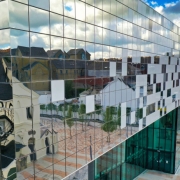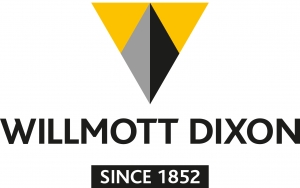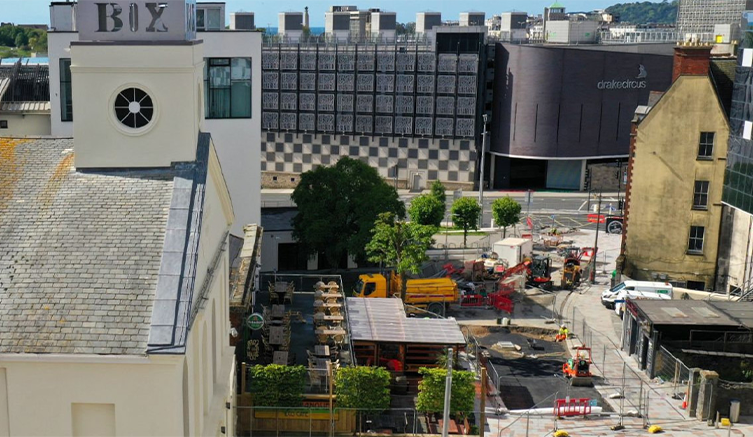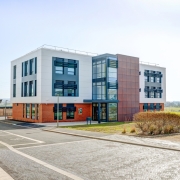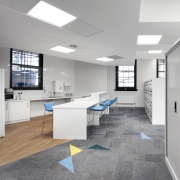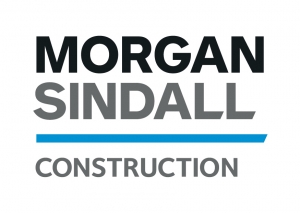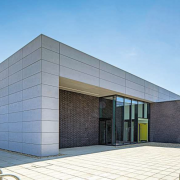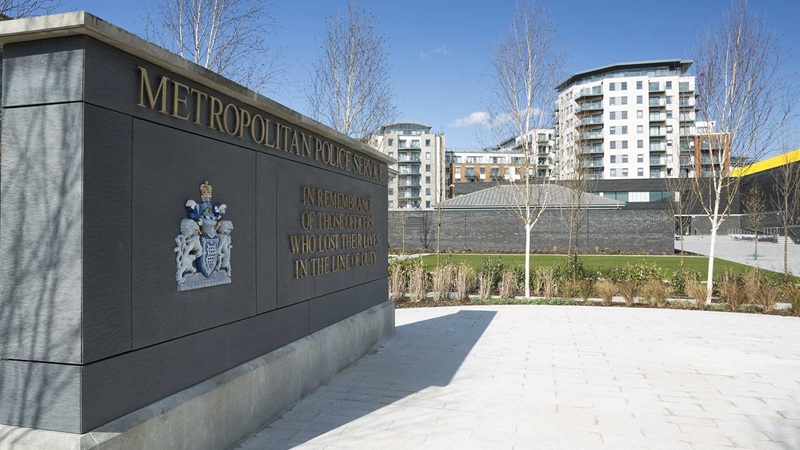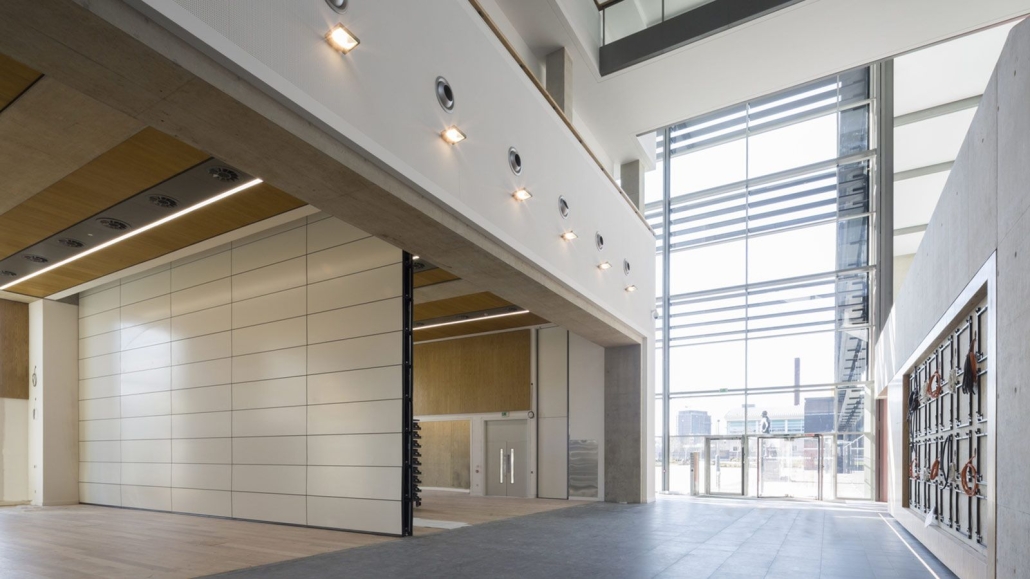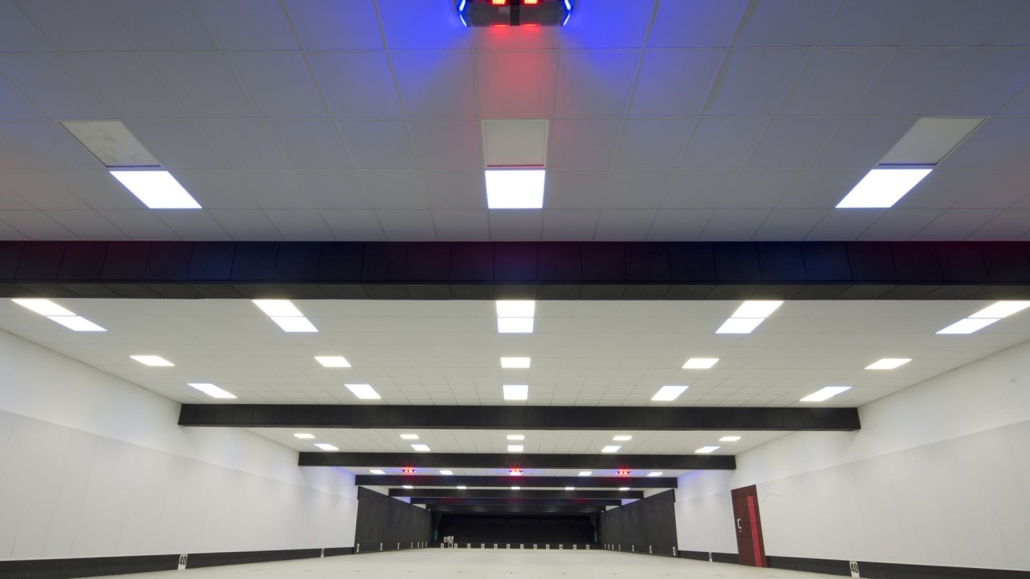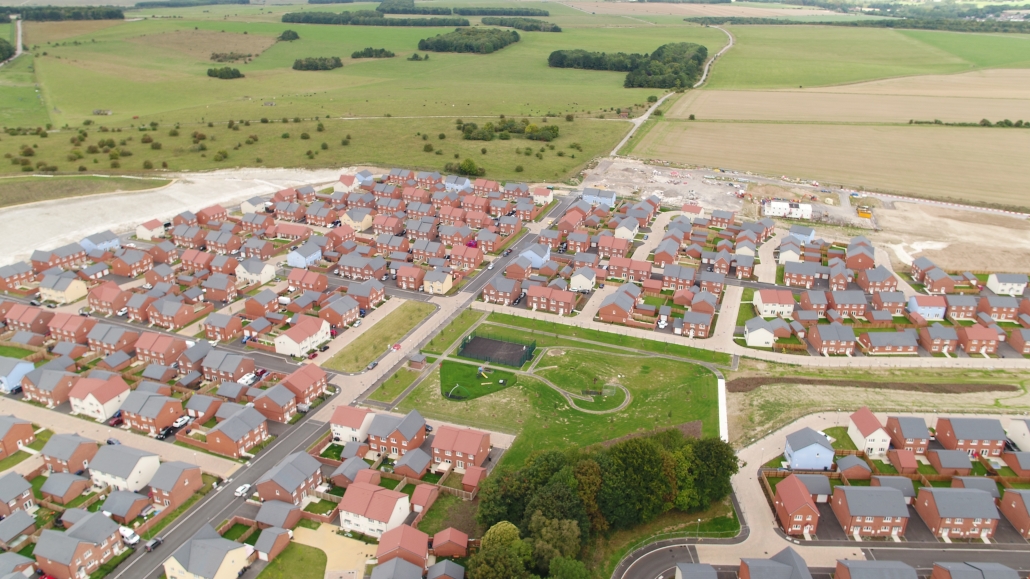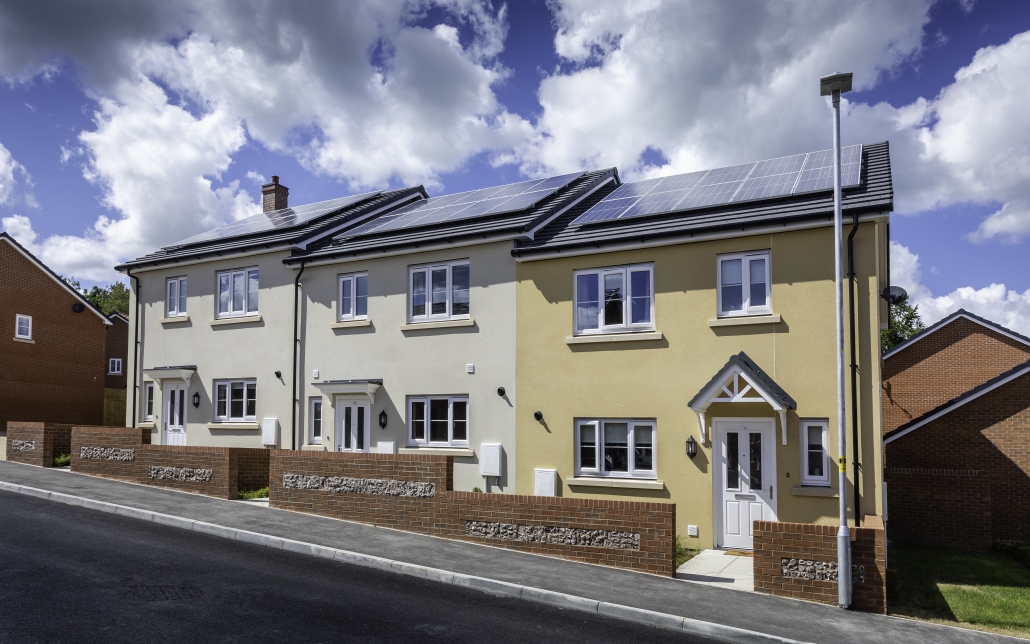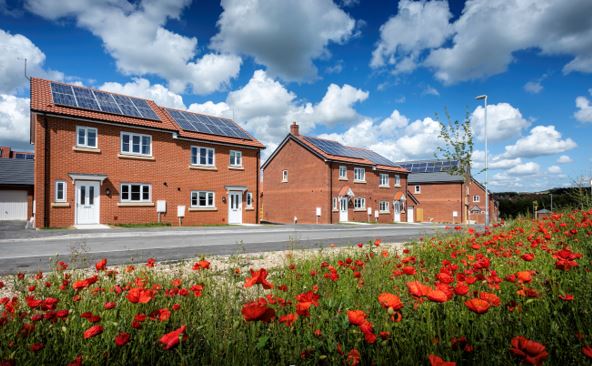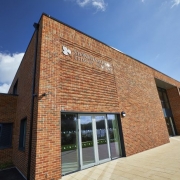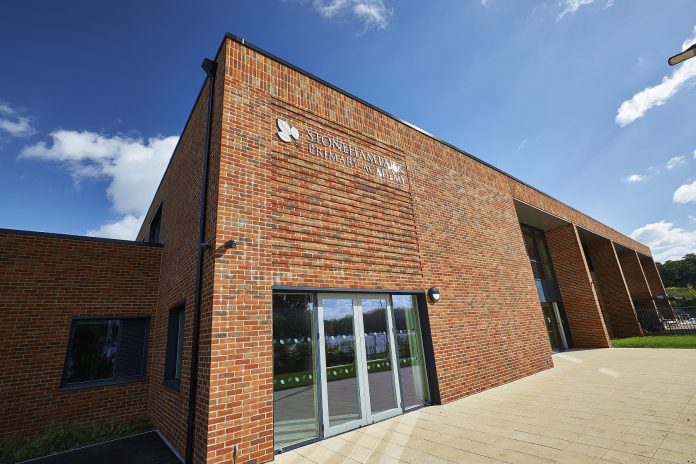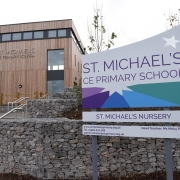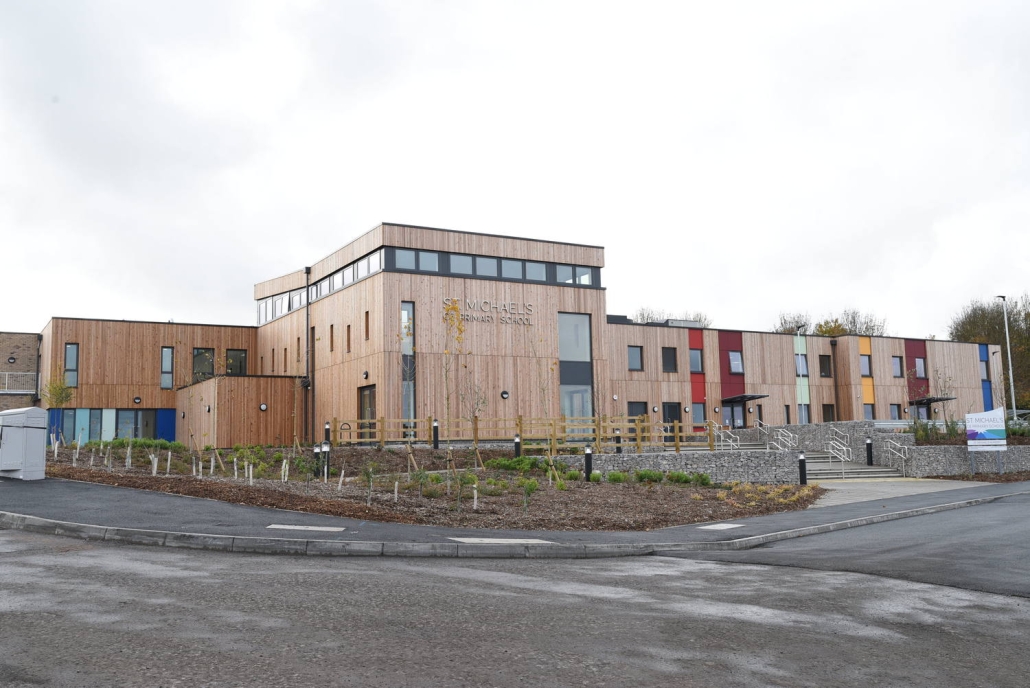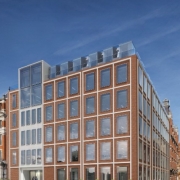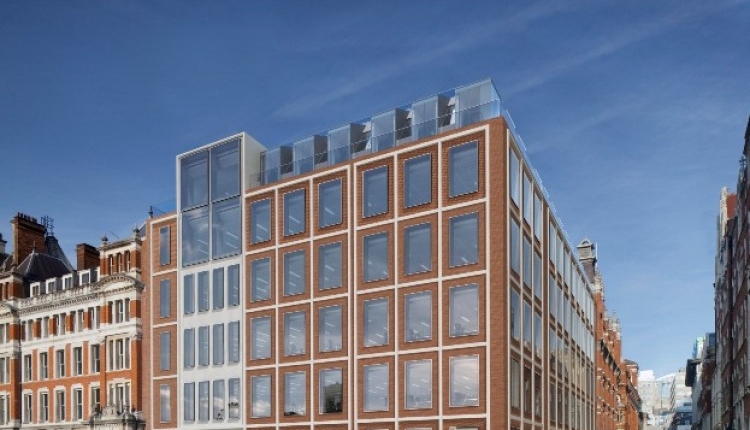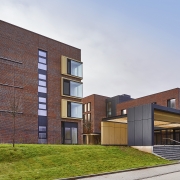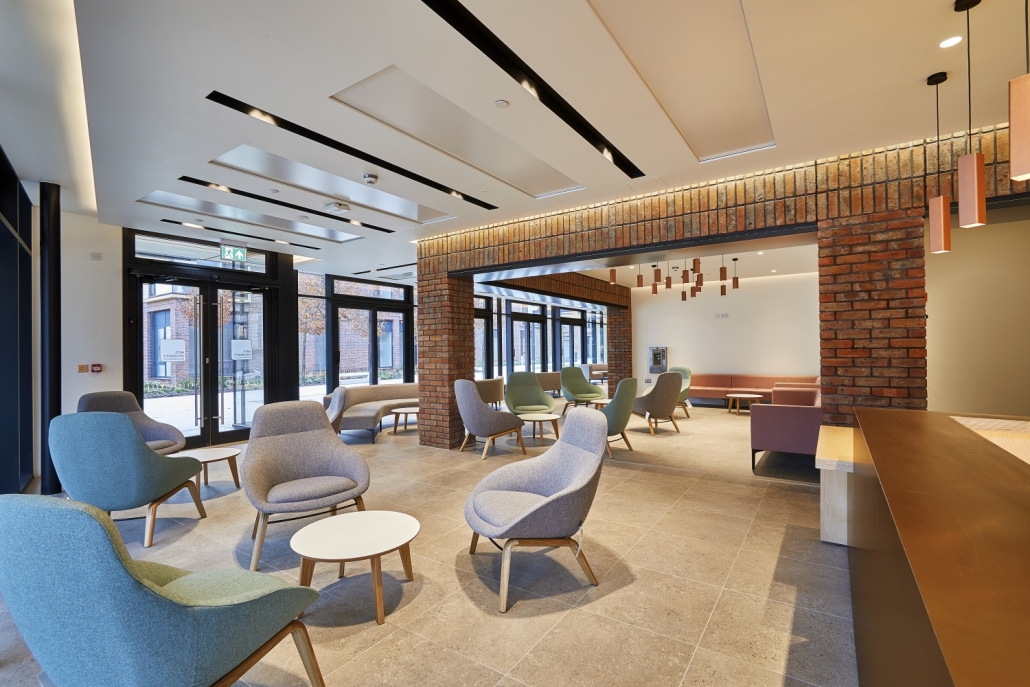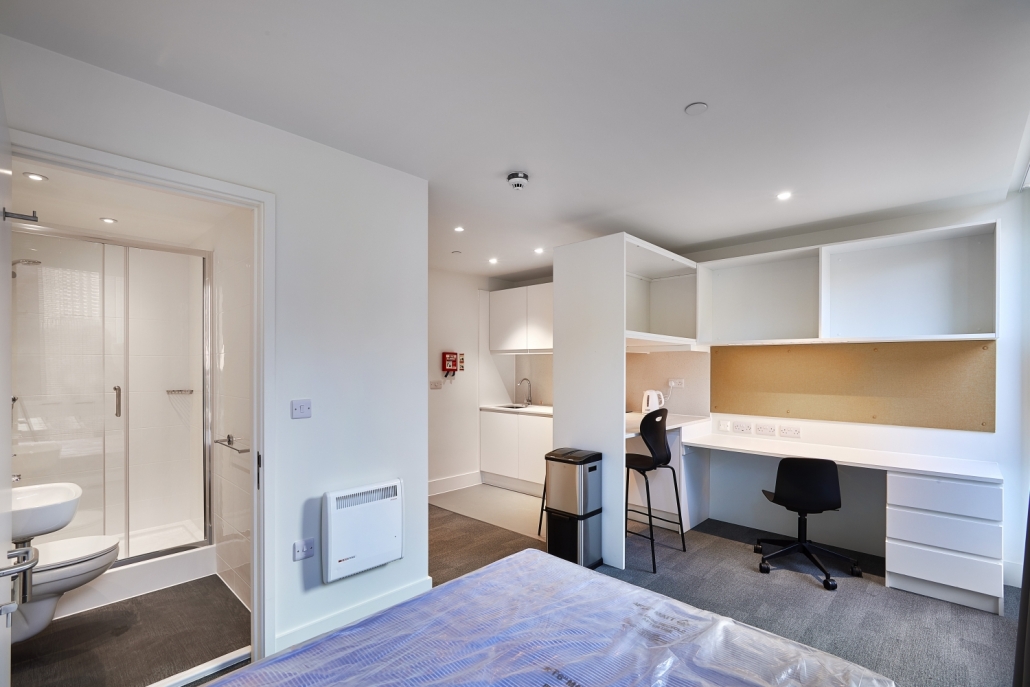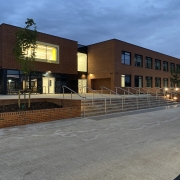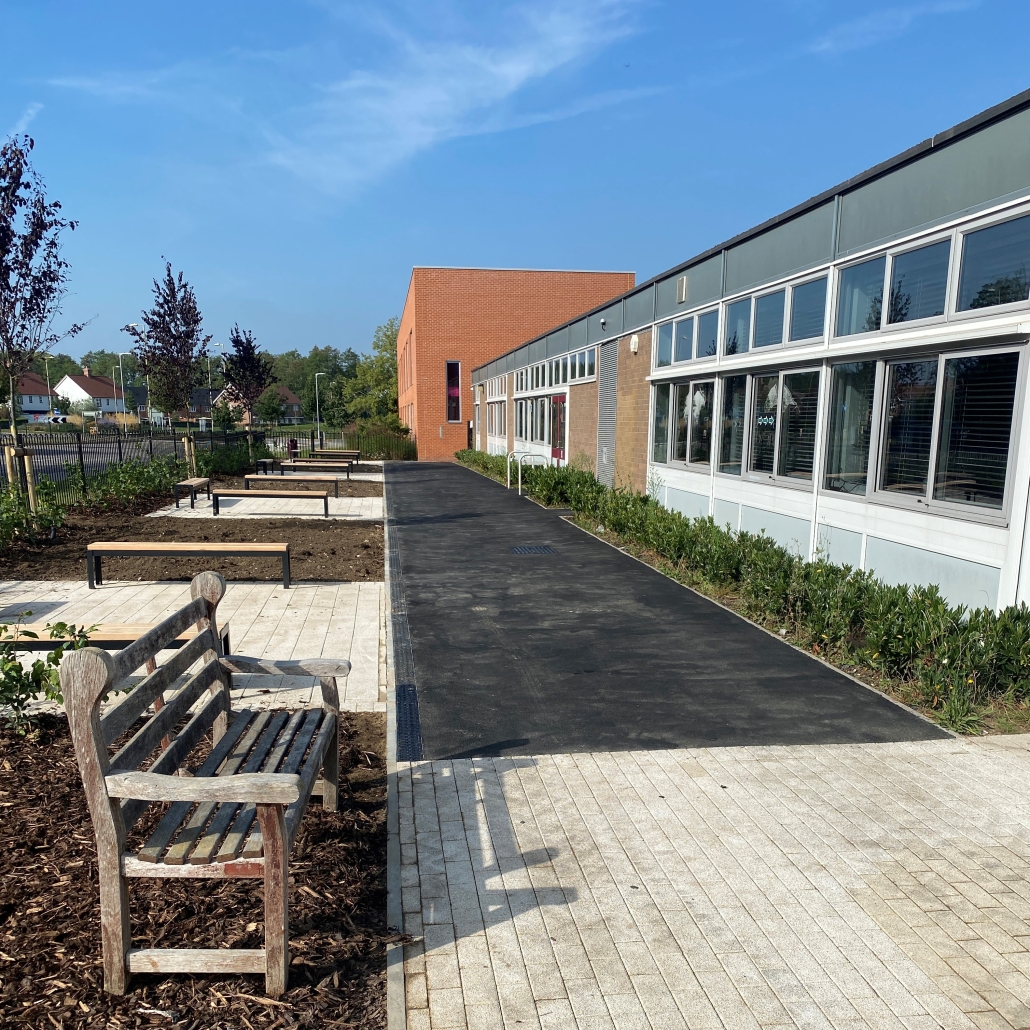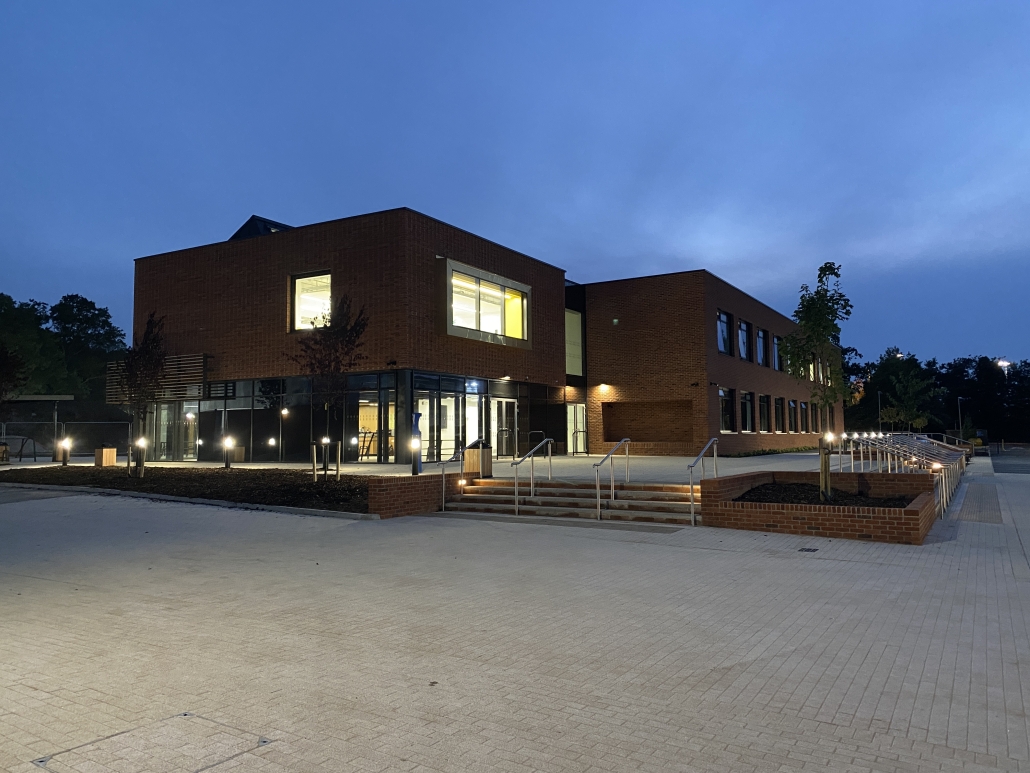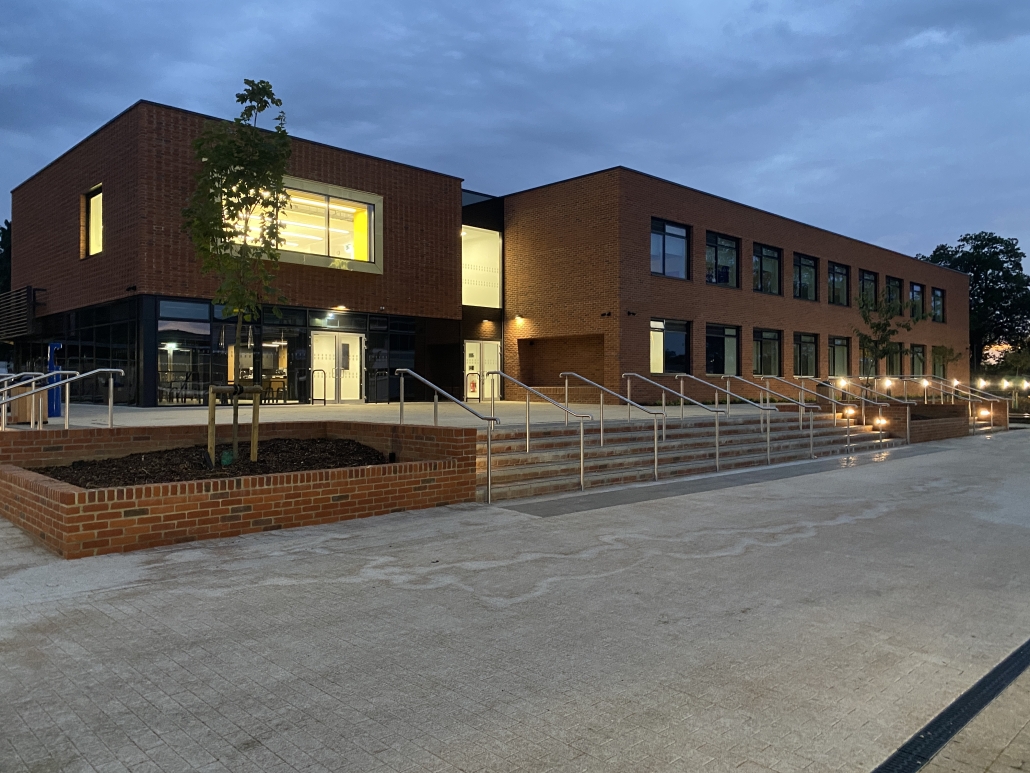The Box, Plymouth
The Challenge
The Box is one of the largest new multi-disciplinary arts and museum spaces, housing Plymouth’s most important heritage collections on one site. A grade two listed building creating heritage attractions has been further underlined by delivering a landmark that celebrates Plymouth’s role shaping world history.
The existing museum became outdated and needed re-energising. Having tabled a scoping brief headed ‘love our past – step into our future’. Research at the time revealed local people’s views: “Its somewhere to go in Plymouth that is interactive, lots of learning – and fun” (MHS – Hero’s) and It really shoes Plymouth off (city bus employ) Design challenge: To transform Plymouths Grade II listed museum, library and adjacent church into a cutting-edge facility boasting 7 galleries and 6 exhibition areas, in a space three times the original site’s size, so required intelligent engineering. Also to include a) 55m² lobbied frozen store to been incorporated into the basement below the main space, b) to house 24,000 boxes and, c) a new piazza which to link the buildings.
The Solution
It was decided to demolish the rear of the existing Central Library and design to convert the Central Library with City Museum and form a rear museum extension with archive facilities; convert St Luke’s church to an exhibition space linked by an new external piazza and adapted highway works.
The Results
The final results are exemplar, Plymouth and its’ community expectations have been far exceeded and is testament to the original brief and allowing the early formation of an integrated team approach.
Apprentices
Achieved Local SME
Added Value
Client Satisfaction
Contractor Performance | Commitments
Fair
98% of regular payments and have payment periods not exceeding 30 days
Sustainability
Undertook over 50 community activities and events – see more
Won Construction Excellence south west awards: Building Project of the Year Award, 2021
Safe
Zero RIDDORs
Legacy
Awards: Since opening The Box has been locally, nationally and internationally recognised receiving 19 awards, including:
European Museum of the Year 2022 – Special Commendation,
iESE Public Sector Transformation Awards 2021 – Use of Digital and Technology for ‘The Box on The Box’ – Silver and,
Michelmores 2021 Property Awards – Leisure & Tourism Project of the Year – Winner and Building of the Year – Winner
Aftercare
Opened during Covid, the team are updating monitoring soft landings
SCF Framework Manager
Kingsley Clarke
Email: kingsley.clarke@devon.gov.uk
Phone: 07805760622
Contractor Framework Manager
Guy Dawes
Email: guy.dawes@willmottdixon.co.uk
Phone: 07989179444
Exeter Science Park – Grow Out Building 3
Project Details
Procurement Type: Two stage
Form of Contract: JCT Design and Build Contract 2016
Contract Period: 42 weeks
Size: 1,329m2
Provision of much-needed grow out space for maturing STEMM (science, technology, engineering, maths and medical) businesses at Exeter Science Park.
Constructed to net zero carbon standards, the ‘BREEAM Excellent’ building is configured to provide 3 floors comprising bespoke laboratory and office accommodation, now known as The George Parker Bidder Building.
The building is the latest in a rolling series of developments in which ESP has demonstrated an approach of Continuous Improvement in its built estate, particularly relating to the environmental performance of buildings.
The Challenge
The project was externally funded. However, the funding cost and time envelopes were extremely challenging, necessitating a completion within 18 months of funding award. Morgan Sindall was formally appointed as Design and Build contractor in November 2021, leaving less than 14 months to take develop the RIBA 2 design price the project, agree the price and contract, and deliver the scheme.
Additionally, sustainability and climate change imperatives were at the heart of the project. This project’s Net Zero Carbon in Use is a steppingstone to the client’s ultimate aim of developing carbon negative buildings that generate more power than they use, creating a carbon “payback” within the lifetime of the building.
The Solution
Working to develop the design “at risk” through the main contractor selection process, allowed the early appointment of key subcontractors, which was required to meet the challenging programme. Furthermore, the client supported Morgan Sindall’s procurement strategy through early instruction of programme-critical structural steelwork order.
The building was designed and delivered to meet the Green Building Councils definition of Nett Zero carbon in use. Our team employed a “Fabric First” strategy to achieve the required sustainability and climate change imperatives.
The Results
An Integrative, collaborative approach characterised all aspects of the project conception, design development and delivery.
The results of this approach are:
- Achievement of project completion, despite the constraints of the second covid lockdown and the materials and components shortages of Q3-4 2022, within 14 months of appointment of Morgan Sindall with the design at RIBA 2;
- An attractive and over-subscribed building;
- Zero defects at handover;
- Delivered within budget;
- Zero carbon in use;
- BREEAM Excellent.
Furthermore, in achieving the required environment targets:
- Our team employed a “Fabric First” strategy, including U values of 0.17 (Wall), 0.1 (Floor) and 0.12 (roof), and air tightness of 3m3/h.m2 This combined with the efficient aspect ratios derived from a simple 3 storey rectilinear building form, and high level of daylighting to create an efficient space to service.
- Heating design was limited by the project requirement to utilise the existing district heating main.
- A roof-mounted solar PV array generates power to balance out energy in use.
Apprentices
SME Spend
Added Value
Client Satisfaction
Client Testimonials
Contractor Performance | Commitments
Aftercare
Soft landings for handover
Dedicated Morgan Sindall point of contact
On-line portal for notifying any defects with 3 priority categories for response times
Fair
100% payment within 30 days terms
Safe
Zero RIDDORs
CCS Score 40/45
Sustainability
The building was designed and delivered to meet the Green Building Councils definition of Nett Zero carbon in use. Our team employed a “Fabric First” strategy to achieve the required sustainability and climate change imperatives.
Zero carbon in use
BREEAM Excellent
“Fabric First” strategy, including U values of 0.17 (Wall), 0.1 (Floor) and 0.12 (roof), and air tightness of 3m3/h.m2K
The predicted in use Energy Use Intensity is 92.09 kWhrs/m2/a.
100% waste diverted from landfill
100% timber responsibly sourced
71 Tonnes of carbon Saved
32 No of SMEs
Legacy
27 beneficiaries
32 SME’s
9 jobs created
160 trainee weeks
Schools engagement: 81 students
25 volunteer hours
83% social value created
SCF Framework Manager
Kingsley Clarke
Email: kingsley.clarke@devon.gov.uk
Phone: 07805760622
Contractor Framework Manager
Alan Smedley
Email: alan.smedley@morgansindall.com
Phone: 07967 686066
Charing Cross Police Station
Charing Cross Police Station
London
Project Details
Client
The Mayor’s Office for Policing and Crime
Contractor
Morgan Sindall
Value
£24.36m
Contract Period
75 weeks
Project Summary
Complete refurbishment of 120,000 sq-ft Police station, in 3 phases whilst in occupation. Key to the project was to maintain all services whilst the custody suites and office areas remain occupied. Refurbishment including all new mechanical and electrical installations, new raised floors, IT, security, lifts, raised floors, ceiling, joinery, toilets together with renovation of roof, windows, doors, repair and replacement of render and external redecoration. New air-conditioning plant was installed at the ground floor with the creation of a plant enclosure in the central courtyard as a solution because we were not allowed to use cranes to lift plant.
I rate Overbury over all other contractors I’ve worked with. Your biggest strength is you, you just get things done. There are no issued and nothing was ever too much trouble. Your team are really approachable.
What a pleasure it has been to work with John Dryden and his team over the last year as he has overseen the transformation of Charing Cross Police Station into a fantastic building that is a fit HQ for frontline policing in central and west London.
Project Competencies
Fair
Fair Payment Charter
Sustainable
Sustainable Development Charter
- 96% waste diverted from landfill
Safe
Health & Safety Charter
Legacy
Legacy Charter
- 22 trainees and apprentices
- 1604 training weeks
- Over £1,000 raised towards the Great Ormond Street Hospital Charity
Aftercare
Handover & Aftercare Contractor Promise
Community Engagement
Whilst on site, the project team were involved in a bake off raising over £1,000 towards the Great Ormond Street Hospital Charity.
Key Challenges
Working in live police station
Working in a live police station with the busiest custody in Europe with 2 armouries that Police need to have constant daily access to allow them to load ammunition and guns to guard prominent buildings in the capital. We had to coordinate with vans with up to 80 prisoners a week being unloaded and loaded in into the courtyard being delivered to the custody suite, whilst keeping the area safe secure for all.
To manage the security levels and keep a fast programme of works, there was a high level of communication and awareness of the police requirements. There was a daily, sometimes hourly, dialog to understand each other’s needs; we had to listen and be flexible and sensitive to the requirements of the Police, sometimes changing the programme to suit operational needs.
We divided the building into sections where the Overbury workforce were not allowed so the Police could carry on policing unhindered.
Deliveries logistics
Working in central London with close proximity to many cafes bars restaurants with no available parking for visitors’ and operatives’ cars, and no unloading area for deliveries.
To manage the deliveries, we needed a phone notification from drivers of delivery lorries whose arrival was imminent, this was taken by our logistics team who either took in the delivery or alerted the subcontractor, so an efficient unload was carried out and materials stacked away promptly to point of work.
We let all the surrounding businesses know who we were with programmes and contact names and mobiles numbers.
There was a high level complaint to the Police and Council regarding construction work causing noise and dust affecting their business, this was caused by another contractor who was working nearby. We met the manager of the restaurant and developed a good relationship with her and helped them continue their business once more with advice and meetings.
Site office location
We needed an area for site office set up and access onto site. We didn’t have an area available inside Charing Cross for site offices and we couldn’t put cabins on the pavement or roof. Westminster Council didn’t allow cabins outside a construction zone so special permission was sought to another solution.
We formed a scaffold all the way around the building with a gantry for cabins which held the site offices, canteen, toilets, meeting rooms, subcontractor office, and changing rooms. We built a security point so we could check all our workforce in and out. The entrance to the workplace was through windows in our secured areas.
Project Takeaways
Our Success
- We built relationships with the Police by building trust with officers, maintaining high security levels, developing flexible programmes and firming budgets with quick costs. This has allowed us to tender more work with the Police.
- £1.66m additional works not originally part of the scheme for custody suits were incorporated into the existing programme.
Our Learnings
- Getting staff security cleared in time: we had to work with some staff and operatives waiting for their clearance which can take up to 9 months. We managed this by giving the non-cleared staff red lanyards and the cleared staff blue lanyards. The red lanyard operatives were not allowed into the police station without an escorted blue lanyard member of staff. The Police understood this and was successful.
Value Added
- Early engagement of supply chain and involvement in design development enabled the project to be completed 4 weeks early.
- Early involvement of supply chain in cost advice ensure the project was procured under budget.
- Changed sequencing reduced programme.
KPI’s & Statistics
| Contract | Gateway 2 Planning | Gateway 3 Contract Agreement | Variation | Gateway 4 Handover | Variation |
| Cost | £23,519,050 | £22,708,452 | -£811,000 | £24,372,709 | £1,664,338 |
| Time | 80 weeks | 72 weeks | -8 weeks | 68 weeks | -4 weeks |
- SMEs: 90%
- Waste diverted from landfill: 96%
Contact: Alan Smedley, Framework Manager
Email: alan.smedley@morgansindall.com
Met Police Service New Hendon Driving Academy
The new Hendon Driving Academy provides driver and investigative training for a wide variety of vehicles ranging from cars, motorbikes, mini buses, lorries to heavy goods vehicles (HGV). It includes classrooms with permanent training equipment in place, supplementary lockers to the main complex, changing facilities for approximately 120-160 staff and students daily, office accommodation, covered vehicle storage/inspection, workshop areas and fuel storage. There is also a requirement for a large yard area for use in various types of vehicle training maneuvers including HGV, hostile evasion techniques and slow speed “escort” motorbike training (the 175m “wobble road”).
The construction of the building itself comprises a light-weight single storey steel frame with insulated prefinished clad exterior. Front facing elevations are finished with a brick slip to match the local vernacular. Internal fit-out consists of drywall construction, suspended ceilings and full MEP systems. Substantial external works, including security fencing, soft and hard landscaping and tarmac vehicle training and testing areas surround the building.
The Challenge
The existing Met Driving Academy facilities located at Hendon are life expired and no longer fit for purpose. The old building is of poor condition and quality, with significant maintenance issues. Refurbishment to current standards and decant of training during construction proved to be uneconomic.
The Metropolitan Police Service appointed Mace via the SCF to deliver their new driving academy, the project represents a significant investment as part of the Met’s Estate Transformation Programme. The project was a follow on to the new training college which Mace successfully delivered in 2016.
The Solution
Positive relationships between all parties enabled the project to proceed smoothly through joined up decision making and a ‘can do’ approach. Agreeing early the project KPIs drove the project towards the goal of completion on time, with minor defects and final accounts completed as package contractors concluded their works.
The construction of the building itself comprises a light-weight single storey steel frame with insulated prefinished clad exterior. Front facing elevations are finished with a brick slip to match the local vernacular. Internal fit-out consists of drywall construction, suspended ceilings and full MEP systems. Substantial external works, including security fencing, soft and hard landscaping and tarmac vehicle training and testing areas surround the building.
The new Hendon Driving Academy provides driver and investigative training for a wide variety of vehicles ranging from cars, motorbikes, mini buses, lorries to heavy goods vehicles (HGV). It includes classrooms with permanent training equipment in place, supplementary lockers to the main complex, changing facilities for approximately 120-160 staff and students daily, office accommodation, covered vehicle storage/inspection, workshop areas and fuel storage.
The Results
Positive relationships between all parties have enabled the project to proceed smoothly through joined up decision making and a ‘can do’ approach.
Agreeing early the project KPIs is driving the project towards the goal of completion on time, with zero defects and final accounts completed as package contractors conclude their works.
Working with the supply chain in a two-stage environment has added value to both the design and construction. For example, the required security standards were already known by the supply chain contractors making delivery and the likelihood for error far reduced.
Apprentices
Added Value
Client Satisfaction
Client Testimonials
Contractor Performance | Commitments
Fair
100% payment within 30 days terms
Sustainability
97% waste diverted from landfill
Safe
CCS Score 41/45
Aftercare
Handover & Aftercare Plan
Legacy
176 training weeks for Apprentices
The site team volunteered time in the adjacent Colindale Gardens development, helping to establish a nature trail and supporting general upkeep.
SCF Framework Manager
James Wright
Email: james.wright@hants.gov.uk
Phone: : 07761 330560
Contractor Framework Manager
David Chambers
Email: david.chambers@macegroup.com
Phone: 07789 514895
DIO Salisbury Plain Training Area Service Family Accommodation
Completed as part of the Army Basing Programme 2020, the project involved the construction and delivery of 917 Service Family Homes at Bulford (225) and Ludgershall (242) by February 2020 and at Larkhill (450) by May 2020 plus various off site highways projects. This collaborative form of contract had seen very little exposure within the housing market prior to this project but the parties engaged enthusiastically and with success.
The Challenge
The design utilised 6 core house types to provide Officer, Other Ranks and adapted living properties. The project spans 3 distinct sites, Bulford, Ludgershall and Larkhill and extensive Section 106 off site Highway works. The high-speed delivery of this project required the output rate in excess of industry norms, with an average handover rate of 16 houses per week, rising to 20 per week at peak output – a delivery rate unprecedented in UK low rise housing,
The Solution
Completed as part of the Army Basing Programme 2020, the delivery rate of this complex, high-volume, fast-track project is unprecedented in UK low rise housing. The was delivered by two timber frame providers working side by side collaboratively (not seen before in UK housing developments) which allowed a speed build of 22 weeks from foundations to superstructure, with an extensive acceptance process.
Collaborative procurement of this nature has seen very little exposure in the residential sector prior to this project. All parties engaged enthusiastically and with success, supported by a shared project office environment. The scheme benefitted from an open and fully collaborative working relationship fostered by DIO, WYG and Lovell.
The Results
Delivered on budget and on schedule, despite pressures from the COVID-19 pandemic, each site presented its own challenges. Extensive archaeology included a forgotten WW1 Practice Battlefield at Larkhill, found to be the largest ever archaeological exploration of such features anywhere in the world. Important historic finds were identified including a Stone Age Double Henge Form, now a registered English Heritage Scheduled Monument.
Despite the challenges, the joint project team succeeded in delivering an exemplary scheme that showcases innovative approaches in the build programme, pace of delivery and high-quality construction.
Apprentices
SME Spend
Added Value
Client Satisfaction
Client Testimonials
Contractor Performance | Commitments
Fair
100% payment within 30 days terms
Sustainability
100% waste diverted from landfill
2,807 Tonnes Carbon Saved
Safe
CCS Score 45/45
Legacy
164 No of SMEs
127 beneficiaries
38 jobs created & 955 trainee weeks
Schools engagement: 364 students
£122,073.50 donations to charity
747 volunteer hours & 74% social value created
Aftercare
Soft landings for handover
Dedicated Morgan Sindall point of contact
On-line portal for notifying any defects with 3 priority categories for response times
SCF Framework Manager
James Wright
Email: james.wright@hants.gov.uk
Phone: 0370 779 0304
Contractor Framework Manager
Alan Smedley
Email: alan.smedley@morgansindall.com
Phone: 07967 686066
Stoneham Park Academy
Stoneham Park Academy
Eastleigh, Hampshire
Project Details
Client
Hampshire County Council
Project Manager
Hampshire County Council
Architect
Hampshire County Council
Contractor
Morgan Sindall
Value
£6.63m
Contract Period
48 weeks
Procurement Type
2-stage
Form of Contract
JCT 2011 SCF/CDP
Size
1,752 m2
Apprentices
6
Project Summary
Stoneham Park Primary Academy is a brand new 315-place primary academy for children aged 4-11, sponsored by the University of Winchester. Opened in September 2020 and situated at the heart of the new North Stoneham Park housing development of 1,100 homes in Eastleigh, it offers high-quality, value-driven education. Designed to encourage community use, with a learning resource area at the heart of the plan.
Stoneham Park Academy is the pilot project for the Hampshire County Council model. Conceived as a lean, compact and energy efficient 2-storey form, the building is modest in scale and future-proofed for expansion. The model can be scaled ranging from 1.5 form entry to 3 form entry and due to its compact footprint can be adopted to suit a variety of sites and contexts as well as the client’s brief and budget.
The school has been built using the Streif modular system, which allowed the structural panels to be delivered to the site with external windows, doors and glazing pre-installed. The system ensured a shorter timescale of delivery and a smaller volume of deliveries to the construction site.
Set over two floors the academy’s facilities include 11 light and airy classrooms, plus nearby areas for one-to-one meetings for children to work together in small groups, a large main hall which is also used for dining and indoor PE, with an adjacent performance hall, kitchen, flexible library space which can also be used for events, a practical classroom, where children can learn design, technology and cooking, office space, medical room, MUGA, playing field with areas for formal and informal play and fully equipped with the latest ICT. Constructed using the latest sustainable technologies, the school includes solar panels to generate electricity.
Maintaining stunning views within its historic deer park setting, the school takes full advantage of the extensive grounds with a full forest school and an outdoor learning programme.
The new state-of-the-art academy provides a modern and welcoming environment providing outstanding facilities for children to learn and flourish.
Key Challenges
COVID-19 Pandemic
In July 2020 and amidst the Covid-19 pandemic, Stoneham Park Academy was handed over successfully on budget, on time, safely and to a very high standard following current government SOP guidelines.
Easy design coordination
Early appointment of our M&E sub-contractors enabled early design coordination and robust review of key details in collaboration with Hampshire County Council’s in-house design team. This ensured fabrication in the Streif factory commenced on programme. The preconstruction team visited the factory in Weinsheim, Germany to gather information on the production process. This included a review of on-site sample details and processes to ensure quality control measures were maintained. All panels arrived as fully sealed components with first fix wire ways including electrical conduits and cable ways for the wall panels as well as cut-outs for sockets and switches.
Volume of change
Volume of change within the contract meant that we had to be tenacious and dynamic involving our supply chain and sub-contractors whilst still maintaining programme.
Project Takeaways
Our Success
- Completing the project on time whilst dealing with the current COVID-19 pandemic.
- Managing the early design coordination over a 6 week period with Strief, M&E supply chain and Hampshire in house designers to ensure the critical date for the fabrication of the Strief timber frame was met.
- An early challenge was being ready with the groundworks and pour the ground-floor slab enabling delivery of the Streif frame; this was completed on time achieving critical path in the programme.
- There are some very high-level finishes in the building and a high quality finish has been achieved.
- Good coordination with external contractors also working on the project for Hampshire County Council.
- Structural Timber Awards 2020 shortlisted finalist (Morgan Sindall Construction) in the Contractor of the Year category
- Structural Timber Awards 2020 shortlisted finalist (Hampshire County Council) in the Education Project of the Year and Pioneer Award categories
- Regional winner and shortlisted finalist for LABC People and Places Award 2021 in the Non-Residential Best Public or Community Building category
Our Learnings
- Collectively, the FF&E packages were coordinated and subsequently procured later than contract programme however, this was overcome proactively between Morgan Sindall and HCC with the desired result achieved.
Value Added
- The compact design is based on ‘fabric first’ principles combined with a mechanical ventilation heat recovery (MVHR) system to improve thermal comfort indoor air quality (IAQ) and dramatically reduces energy consumption.
- An options appraisal for the superstructure concluded that an offsite timber frame was the preferred solution for the project providing quality control and programme benefits.
- The innovative Streif advanced timber panel system is a robust and highly sustainable framed construction based on low carbon/energy use. This provides numerous benefits including improved quality and running costs, significant savings on programme and preliminaries whilst minimising the risk of coordination errors when working internally.
- On time manufacture and delivery allowed the building to rapidly achieve the key milestone of watertightness enabling access to all working areas for internal finishing trades in multiple areas in dry conditions at the same time.
- Externally the cavity brickwork facades could safely proceed unhindered by other trades due to the factory-installed cavity insulation and membranes on the external face of the panels.
- The whole manufacture is audited to ISO 9001 standards.
- Off-site manufacture dramatically reduced the number of operatives on site thereby reducing construction phase health and safety risks and waste on site.
KPI’s & Statistics
| Contract | Gateway 2 Planning | Gateway 4 Handover | Variation |
| Cost | £6,700,00 | £6,635,072 | -1% |
| Time | 59.6 weeks | 48.6 weeks | -11 weeks |
St Michael’s CE Primary School
New 2FE (420 place) primary school plus 60-place nursery school provision on greenfield site in Larkhill, Wiltshire. This project was part of the Army Rebasing Programme for the relocation of troops from Germany with 917 homes constructed by Morgan Sindall Group sister company, Lovell.
The Challenge
- Challenging site access
The installation of the planned approach road to site (not undertaken by Morgan Sindall) was delayed and not in place for the start of works.
- Complex topography and formation of terraced hard landscaping
The topography of the site involved a 15m gradient across the site.
- Bringing the project to budget
A VE exercise was undertaken during the second stage to identify opportunities and suggest alternative products or rationalisation of the design, to bring the project to budget.
The Solution
- Challenging site access
We had to utilise an alternative 2.5 mile redundant off-road ‘tank’ track. Prior to being able to use this route, appropriate UXO and archaeology certificates had to be obtained.
- Complex topography and formation of terraced hard landscaping
The school building itself was positioned at the lowest part of the slope, with the courtyard and break-out areas to the rear on the same elevation. The first terrace was formed using a stone gabion retaining structure, leading to soft landscaping. The next level was formed with a timber crib local wall providing the Multi-Use Games Area (MUGA). The following terrace created a wild flower meadow, and finally the top level provided the sports pitches.
- Bringing the project to budget
The VE exercise identified the following:
- A Siniat Weather Defence Board was identified as an alternative product which reduces reliance on workmanship, providing a consistent quality finish and reducing the need for third-party quality checks, saving costs.
- Omission of Brise Solei and adjustment to floor finishes, provided a £20k saving to the school’s life cycle costs.
- Thickness of the ground floor slab was reduced from 200mm all over, to 150mm to all areas, except the plant room and main hall, saving £20k.
- Composite windows were changed to aluminium, saving £50k. Aluminium windows offer the same BREEAM rating, achieve the same U value and are a more robust product.
–
The Results
We identified over £436k of savings through the VE exercise up to Gateway 3, an additional £10k to incorporate cycle storage, and a further £220k incorporated during the project (signed off at Gateway 4). We also successfully delivered the project to a delighted client who gave us a recommended score of 9/10.
Added Value
Client Satisfaction
Client Testimonials
Contractor Performance | Commitments
Fair
100% payment within 30 days terms
Sustainability
100% timber responsibly sourced
Safe
Zero RIDDORs
Legacy
29 beneficiaries
Aftercare
Soft landings for handover
Dedicated Morgan Sindall point of contact
On-line portal for notifying any defects with 3 priority categories for response times
SCF Framework Manager
Kingsley Clarke
Email: kingsley.clarke@devon.gov.uk
Phone: 07805760622
Contractor Framework Manager
Alan Smedley
Email: alan.smedley@morgansindall.com
Phone: 07967 686066
Ofcom Riverside House
Ofcom Riverside House
London
Project Details
Client
OFCOM
Project Manager
Cushman & Wakefield
Architect
Spacelab
Contractor
Morgan Sindall
Value
£11.99m
Contract Period
51 weeks
Procurement Type
2-stage
Form of Contract
JCT D&B
Size
90,000 sqft
Apprentices
10
Project Summary
Overbury completed the full Cat A and B fit out over 6 floors (90,000 sq. ft.) for Ofcom at their current site within Riverside House, London. The works were undertaken to significantly modernise and improve their current working environment.
The project incorporated the installation of the entire CAT A and CAT B works such as new conference suites, cellular meeting rooms, new toilet areas, a restaurant, tea points and a new reception area. Also constructed was the installation of an interconnecting staircase between all floors which included joinery finishes and integrated feature lighting.
The building was fully occupied throughout so it was imperative that noisy works were carried out with full consideration to the building tenants. Security was paramount always and Overbury co-operated fully with the building facilities team ensuring all permits and security passes were in place always.
The building’s existing structural constraints were key to the final design, as such Overbury ensured a fully comprehensive survey along with the provision of additional detailed working drawings. Overbury carried out numerous workshops throughout which ensured procurement dates were always achieved on time. In addition, a recognised ‘Apprenticeship Scheme’ was implemented in accordance with a registered government scheme.
When undertaking these works site operatives were required to use the same loading bay as neighbouring tenants. The chilled beams (560 in total) were installed via a hoist on the outside of the building due to their length exceeding the perimeters of the goods lift.
Works were undertaken to a tight budget with no provisional sums. As a Government entity, Overbury’s accountability throughout the project was key from build to final account.
“Thank you for the time and effort invested in planning and coordinating the extensive phased transitions across 7 occupied floors in order to create the necessary swing space required to execute the fit-out works, and your consistent on-site review and update of the programme during the construction phase, with minimal disruption to the client’s employees and their business.”
Key Challenges
No disruption to daily business operations
Completing the works in a phased manor so as not to disrupt Ofcom’s daily business operations. A phased programme was devised where staff only had to relocate once. A new meeting suite was constructed on a differing level so that meeting continuity was maintained.
M&E Installations
Renewing all the on-floor M&E equipment without impacting on other floors. Temporary works were carried out on the BMS and fire alarm systems so that other floors operated as usual.
New 5-storey staircase
Installing a five-storey staircase through the heart of an occupied building. This was further complicated because it was delayed due to legal reasons between Ofcom and their new Freeholder. Install was achieved working from the bottom within the confines of the shaft.
Project Takeaways
Our Success
- The project was closely managed. Overbury implemented an experienced team to closely manage not only the project as typical of a fit-out, but dedicated specialised managers who took responsibility for each key issue personally. As a result, the project was extremely smooth and the experience was exceptional for not only our Employer but also our supply chain. Furthermore our site shared the courtyard with the HSE; we had no problems and didn’t give any cause to even warrant a visit.
Our Learnings
- Late agreement and out of sequence installation of the stairs.
Value Added
- Overbury and its supply chain throughout the project employed 10 trainees and apprentices which resulted in providing 158 weeks training weeks
- 3 work placements for work experience persons
- Renewable/sustainability advice was provided to ensure a regime was in place which resulted in circa 90% diversion of waste away from landfill
- Early Engagement of supply chain and involvement in design development to redesign the chilled beam system to achieve both better buildability and value engineering
- Early involvement of subcontractors in cost advice to ensure the budget was realised and delivered under budget
- Logistics advice on specific aspects, specifically where the removal of the existing façade and installation of bespoke hoist built to overcome delivery issues
- Value Management identified by project team at feasibility which was carried through the 2nd stage to ensure this was implemented
- Changed delivery times or sequencing to suit client activities and / or minimise disruption to neighbours
- Boost to the local economy by selection of contractors based in local area and use of locally sourced materials
KPI’s & Statistics
| Contract | Gateway 2 Planning | Gateway 3 Contract Agreement | Variation | Gateway 4 Handover | Variation |
| Cost | £12,536,750 | £11,991,833 | -4.4% | £11,991,88 | 0% |
| Time | 76 weeks | 60 weeks | -16 weels | 51 weeks | -9 weeks |
Arts University Bournemouth Student Accommodation
New build 299-bed student accommodation delivered as part of continued investment into the university’s main campus which is central to AUB’s future aspirations to grow its reputation as a leading arts university. This project was unusual for a student accommodation project given the major focus on sustainability and design throughout to reflect the university’s core ethos. The accommodation is formed of 3 buildings spread across 11 blocks set around a landscaped courtyard.
The Challenge
Intumescent paint
To successfully apply the full system of intumescent paint, we required three days of good continuous weather at a good regular temperature. During construction, wet weather conditions meant we could not apply the paint as required, which resulted in programme delay.
Meeting client’s budget and design intent
One of the client’s key drivers was the visual impact of the new building. However, the original design intent did not meet the client’s budget.
Covid-19 pandemic
When the lockdown occurred in mid-March 2020, the project was ramping up at just under 200 operatives working on the scheme. It was peaking at our planned full production flow, both internally, on the fit-out, and on the external envelope in parallel.
Within a week, it became very apparent, as the Government made essential announcements, that the site set-up and logistics needed to change drastically to meet social distance and Covid-19 SOPs requirements. This was alongside daily concerns of whether there would be enough materials and PPE continuity, all having to be constantly micro-managed from one day to the next by the site team, supply chain and MS procurement structure.
Initially, there was no choice but to force a scaling down of the workforce to about a third, then look to progressively increase back to similar numbers with more managed productivity, as well as:
- Re-assessing everything from turning our logistics plans on their heads
- Implementing daily changes to site flow and plant segregation to prioritise pedestrian social distancing, in and around the building, to all active workfaces
- Major changes at all workfaces themselves to ensure works could proceed in a safe, socially distanced manner, whatever the trade.
The Solution
Intumescent paint
We re-mapped the programme so we would get back on track with the start of enclosing the building and having trigger points for the internal trades which had slipped due to the issues with the paint. During this time, we also had the impact of Covid-19, which meant we had to comply with socially distanced requirements where only one trade was allowed per floor as opposed to having several trades working together on the same floor to catch-up with the programme.
Meeting client’s budget and design intent
We undertook a detailed Value Engineering (VE) process to collaboratively develop a solution which met both client’s budget and design aspirations. As part of the exercise, we looked at changing blockwork partitions to lightweight construction. In addition, we produced a ‘pick list’ of costed VE options for the Client to consider and held workshops with the Client’s team to present and review all options available; ranging from specification changes, to a full redesign of the scheme. The client took on-board the VE options which aligned with the aspects of the design which were important to them.
Covid-19 pandemic
To overcome this and be able to progressively return to strong productivity, we implemented a systematic one trade per floor social distancing requirement. This was particularly important with the sheer intensity of internal fit-out works inside the floorplates. On the envelope, the need to socially distance on the scaffold led to lowered numbers of operatives on any one elevation, however it meant an increase in numbers of active elevations at any one time.
From this scaled down position, we then progressively ramped trades back up as space, progress within zones, and materials supply continuity all gradually improved.
All of this still needed intense daily management and coordination, right through to completion and the team rose to the occasion.
Our relationship and strong support from AUB helped massively with provision of temporary space for welfare within the university, as well as increased ground space allocation during these difficult times to spread out our welfare arrangements. Each of our supply chain partners, alongside the entire Morgan Sindall team, encouraged manufacturers and suppliers to keep production high and supply channels open.
The Results
Despite the above issues, we managed to successfully complete this project in November 2020. All VE targeted across all design disciplines was realised without compromising the agreed design intent or quality. Everyone worked tirelessly to help the team on the ground to deliver this fantastic project successfully and to a delighted client who gave us a recommended score of 9/10. The project also received a Considerate Constructor’s Scheme Certificate of Excellence.
Apprentices
SME Spend
Added Value
Client Satisfaction
Client Testimonials
Contractor Performance | Commitments
Fair
100% payment within 30 days terms
Sustainability
BREEAM Very Good
94% waste diverted from landfill
100% timber responsibly sourced
Safe
Zero RIDDORs
CCS Score 44/45
Legacy
45 beneficiaries
32 SMEs
22 jobs created
724 trainee weeks
Schools engagement: 224 students
£9183.00 donations to charity
114 volunteer hours
74% social value created
Aftercare
Handover & Aftercare Contractor Promise
Soft landings for handover
Dedicated Morgan Sindall point of contact
On-line portal for notifying any defects with 3 priority categories for response times
SCF Framework Manager
Kingsley Clarke
Email: kingsley.clarke@devon.gov.uk
Phone: 07805760622
Contractor Framework Manager
Alan Smedley
Email: alan.smedley@morgansindall.com
Phone: 07967 686066
Calthorpe Park School
Following Hampshire County Council’s investment to meet increased local demand to provide 300 new places for 11-16 year-old students over the next 5 years, this new extension block forms a two-storey building housing a dedicated maths department as well as two state-of-the-art ICT/technology classrooms. Additionally, there is a new specialist ceramics studio and communal dining area increasing facilities for community use. The project also enhances the existing campus by providing landscaped green social spaces for outside dining, teaching and a performance space with a new amphitheatre for outside productions.
The Challenge
Delivering a project in the midst of a worldwide pandemic
Changing guidance from the Government to the school meant they had to amend how they operated, which in turn meant we had to adapt our works accordingly.
Pressures on programme betterment
We made a collective decision as to whether the client required a temporary school as the original programme had a completion date of the end of September, which would be during term time and meant pupils would need alternative accommodation. We agreed the school would be handed over early, therefore eliminating the need for temporary school accommodation. The earlier completion date meant the client and school had an operational building ready for the new term time.
Late changes to design
Late changes were made to the servery downstairs. The servery was originally designed for cold food prep, however 12 weeks before handover this was to be changed to a hot food mini kitchen.
The Solution
Delivering a project in the midst of a worldwide pandemic
Due to the Covid-19 pandemic we had to re-programme our external works. In our original plan, we were going to work in larger areas at a time and hand each one over. However during the pandemic, the Covid management strategy meant there were changes to the movement of pupils around the school. To meet with this new strategy, we re-programmed our works during half-term periods to allow the school to manage their Covid processes.
In order to minimise any disruption, we worked closely with the school on a daily basis to understand their changing strategies with Covid and then manage our works accordingly. During the tender stage, we implemented more hoarding than originally planned, as the school asked for more segregation between our works and the school.
In addition, drainage works around the existing MUGA and existing fences had to be undertaken during half-term to minimise disruption to the school.
The science refurbishment works were undertaken in the summer holidays. This was a tight programme, however we managed to achieve this through early engagement with the supply chain and being open and honest with them about the programme from the start in order to gain buy in from them. Our engagement with the supply chain started in March, ready for the July start. Materials, labour and resources were also planned ahead so they were ready for the refurbishment phase. We also treated the refurbishment as a separate phase internally, so we could effectively manage the works and meet the timescales.
Pressures on programme betterment
We created an open and collaborative approach with our supply chain. From the outset we offered our supply chain to visit site the project before they started and had early conversations with them to get them on board, particularly with the early packages.
Late Changes to design
Initially there was only a small amount of M&E in the walls, therefore we changed these to suit a commercialised kitchen. We put these extra services in the wall ahead of any design and instruction, so we didn’t delay the programme. The client subsequently incorporated these services into their design.
The Results
We successfully finished the building four weeks early and to a delighted Client who gave us a recommended score of 9/10.
Apprentices
SME Spend
Added Value
Client Satisfaction
Client Testimonials
Contractor Performance | Commitments
Fair
100% payment within 30 days terms
Sustainability
100% waste diverted from landfill
100% timber responsibly sourced
37.35 tonnes carbon saved
Safe
Zero RIDDORs
CCS Score 42/45
Legacy
27 No of SMEs delivering
14 beneficiaries
2 jobs created
198 trainee weeks
Schools engagement: 718 students
£4742.60 donations to charity
5 volunteer hours
78% social value created
Aftercare
Soft landings for handover
Dedicated Morgan Sindall point of contact
On-line portal for notifying any defects with 3 priority categories for response times
SCF Framework Manager
James Wright
Email: james.wright@hants.gov.uk
Phone: 07761 330560
Contractor Framework Manager
Alan Smedley
Email: alan.smedley@morgansindall.com
Phone: 07967 686066
